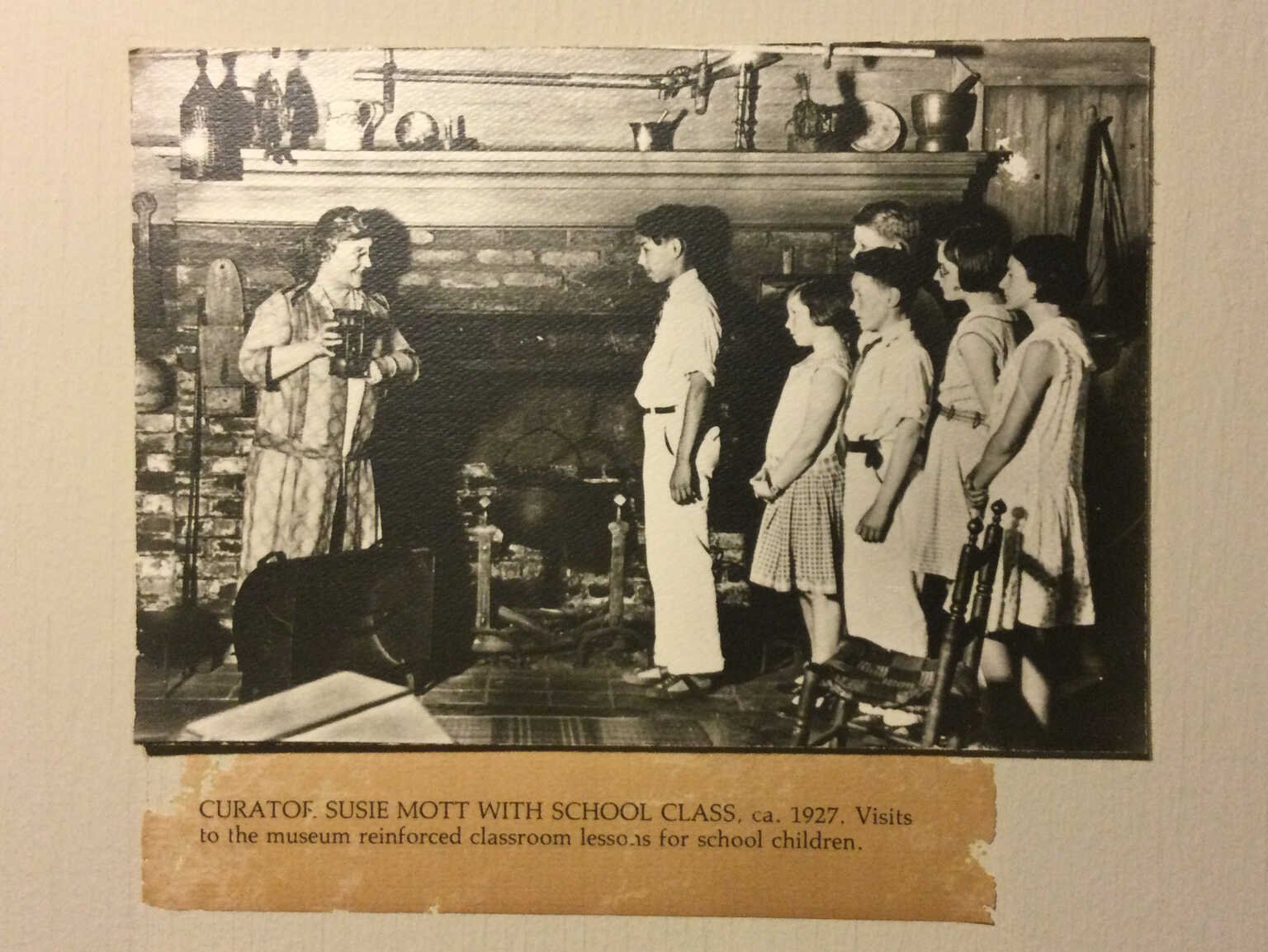The Oakland Public Museum
In Residence 1907-1965
An Oakland Public Museum docent shows a group of schoolchildren an artifact in the American-Colonial collection. The group is standing in the room known as the “Colonial Kitchen” during the Oakland Public Museum period. Camron-Stanford House archives.
In 1907, following the election of Mayor Frank K. Mott, the City of Oakland purchased the Camron-Stanford House lake-front property for $40,000 and condemned all the other private residences then bordering the lake. In their place, the city created Lakeside Park to provide public access to Lake Merritt for the first time. Three years later, Mayor Mott continued his “City Beautiful” projects by establishing the Oakland Public Museum in the house that had once belonged to the Camron, Stanford and Wright families.
Postcard featuring an image of the Camron-Stanford House as the Oakland Public Museum.
-
1876-1877: Alice (Marsh), William, Amy, and Gracie Camron
-
1877-1881: David and Matilda Hewes and Franklina (Gray), William, and Lanier Bartlett
-
1882-1903: Josiah, Helen, and Joe Stanford
-
1903-1907: Captain John Tenant Wright Jr., Trella (Beck) Wright
-
1907-1965
-
1965-Present
Oakland Tribune article from November 1955 titled, “Culture in Shabbiness: Oakland’s Museums Far Outgrow Display Space.”
Charles P. Wilcomb was hired as the museum’s first curator and filled 14 rooms with more than 12,000 ornithological, anthropological, and ethnographic collections. Much of the interior was changed to accommodate the building’s new function. The veranda was expanded and the gallery rooms on the ground level were added at the rear of the house. During this time, the original kitchen was lost; the large fireplace downstairs was added as part of a “Colonial kitchen” educational room. The room that now functions as the Art Gallery once displayed a huge diorama of taxidermy animals. Two other museums were eventually built in Oakland: the Oakland Art Gallery in 1916 and the Snow Museum in 1922. However, the Oakland Museum was the first teaching museum west of the Mississippi River and continued in that capacity for 56 years.
In the 1950s, concerns began to arise about the need for additional display and storage space for Oakland’s municipal collections. By 1955, as an article in the Oakland Tribune noted, the Oakland Public Museum was “jammed with 90,000 objects, or ‘artifacts,’ of which only 25% are on display.” The situation at the Snow Museum and the Art Gallery were similarly cramped and increasingly unsustainable.
By the late 1950s, plans for the new Oakland Museum of California were underway. The new museum combined the collections of the three Oakland museums into one new, modern, and innovative space. By 1965 the Oakland Public Museum had completely vacated the Camron-Stanford House, and the building’s future faced years of uncertainty.



